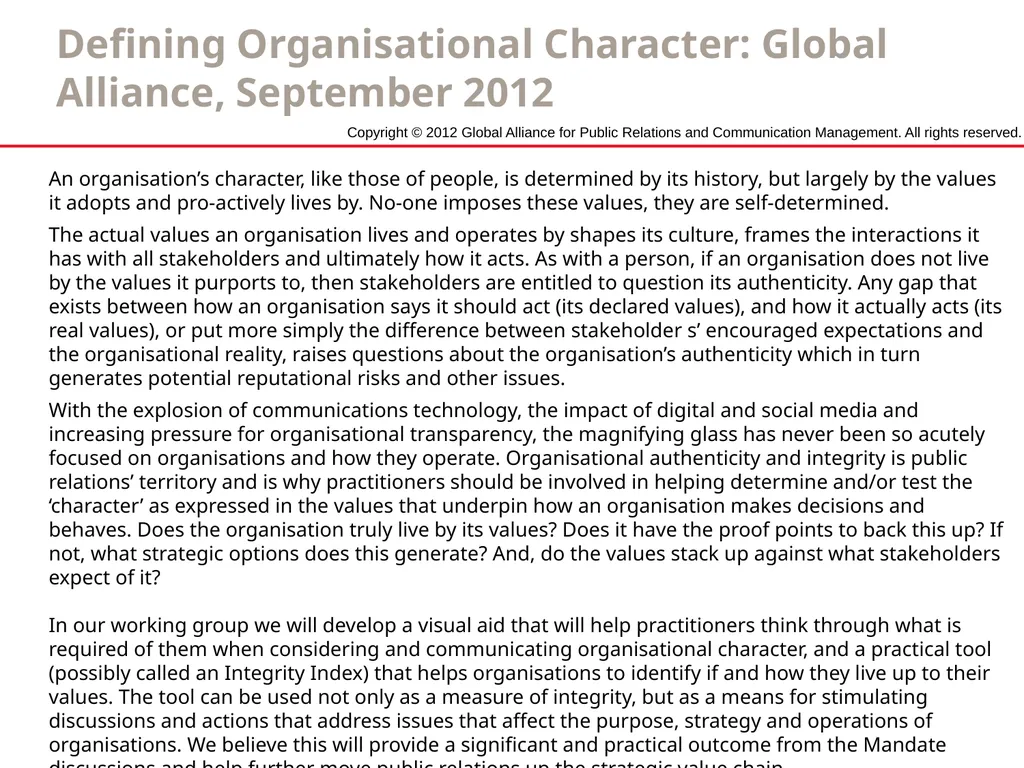
Defining Organisational Character: Global
Author: debby-jeon | Published: 2025-05-29
Description: Defining Organisational Character: Global Alliance, September 2012 An organisations character, like those of people, is determined by its history, but largely by the values it adopts and pro-actively lives by. No-one imposes these values,
Download Presentation
Download the PPT/PDF: Download
Transcript:
Loading transcript…